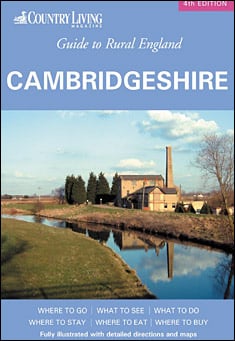Extending over much of the county from the Wash, the flat fields of the Fens are like a breath of fresh air, far removed from the hustle and bustle of modern life. These fields contain some of the richest soil in England, and villages such as Fordham and small towns like Ely rise out of the landscape on low hills. Before the Fens were drained, this was a land of mist, marshes and bogs, of small islands inhabited by independent folk, their livelihood the fish and waterfowl of this eerie, watery place. The region is full of legends of web-footed people, ghosts and witchcraft. Today’s landscape is the result of human ingenuity, with its constant desire to tame the wilderness and create farmland. This fascinating story spans the centuries from the earliest Roman and Anglo-Saxon times, when the first embankments and drains were constructed to lessen the frequency of flooding. Throughout the Middle Ages large areas were reclaimed, with much of the work being undertaken by the monasteries. The first straight cut bypassed the Great Ouse, allowing the water to run out to sea more quickly. After the Civil War, the New Bedford River was cut parallel to the first. These two still provide the basic drainage for much of Fenland. The significant influence of the Dutch lives on in some of the architecture and place names of the Fens. Over the years it became necessary to pump rainwater from the fields up into the rivers and, as in the Netherlands, windmills took on this task. They could not always cope with the height of the lift required, but fortunately the steam engine came along, to be replaced eventually by the electric pumps that can raise thousands of gallons of water a second to protect the land from the ever-present threat of rain and tide. The Fens offer unlimited opportunities for exploring on foot, by car, bicycle or by boat. Anglers are well catered for, and visitors with an interest in wildlife will be in their element.
Southeastern Cambridgeshire covers the area around the city of Cambridge and is rich in history, with a host of archaeological sites and monuments to visit, as well as many important museums. The area is fairly flat, so it makes for great walking and cycling tours, and offers a surprising variety of landscapes. The Romans planted vines here and, to this day, the region is one of the main producers of British wines. At the heart of it all is Cambridge itself, one of the leading academic centres in the world and a city that deserves plenty of time to explore - on foot, by bicycle or by the gentler, more romantic option of a punt.
The old county of Huntingdonshire is the heartland of the rural heritage of Cambridgeshire. Here, the home of Oliver Cromwell beckons with a wealth of history and pleasing landscapes. Many motorists follow the Cromwell Trail, which guides tourists around the legacy of buildings and places in the area associated with the man. The natural start of the Trail is Huntingdon itself, where Cromwell was born the son of a country gentleman. Other main stopping places are covered in this chapter.
The Ouse Valley Way (26 miles long) follows the course of the Great Ouse through pretty villages and a variety of natural attractions. A gentle cruise along this area can fill a lazy day to perfection, but for those who prefer something more energetic on the water there are excellent, versatile facilities at Grafham Water. The Nene- Ouse Navigation Link, part of the Fenland Waterway, provides the opportunity for a relaxed look at a lovely part of the region. It travels from Stanground Lock near Peterborough to a lock at the small village of Salters Lode in the east, and the 28-mile journey passes through several Fenland towns and a rich variety of wildlife habitats.






























































